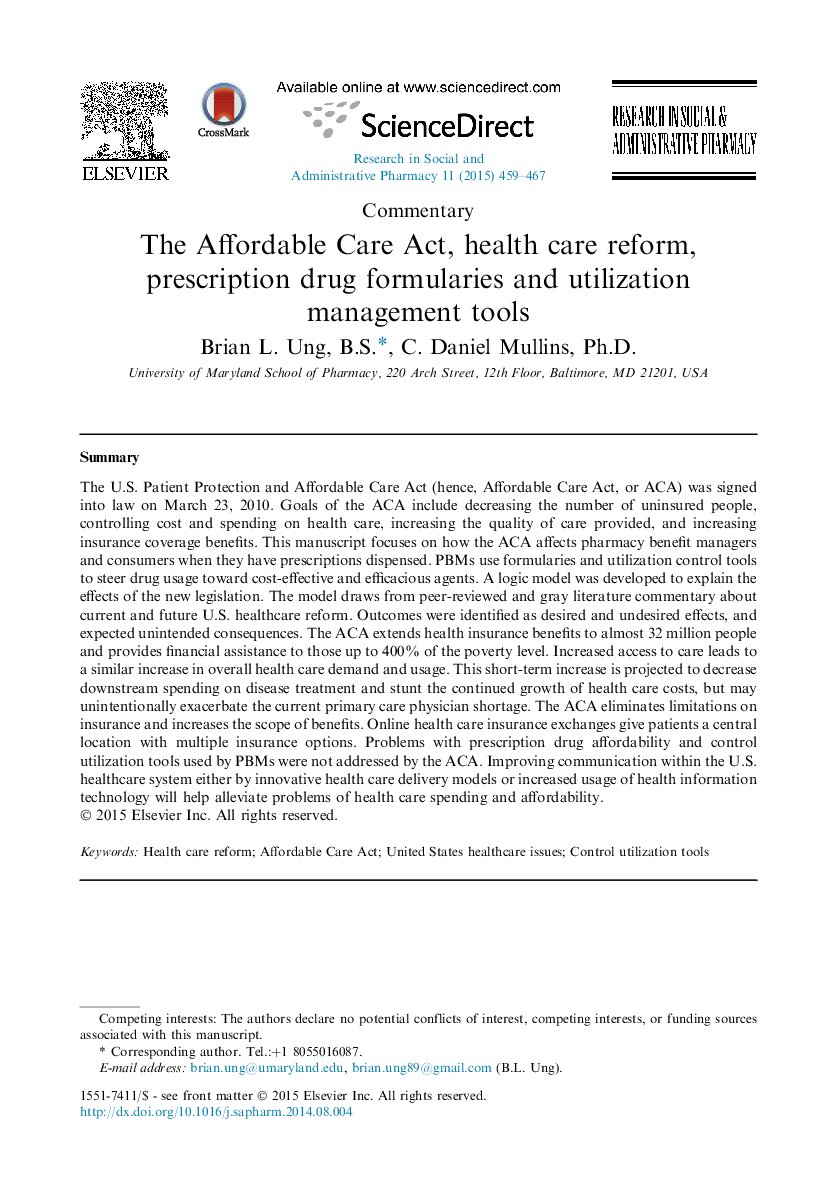| Article ID | Journal | Published Year | Pages | File Type |
|---|---|---|---|---|
| 2508333 | Research in Social and Administrative Pharmacy | 2015 | 9 Pages |
SummaryThe U.S. Patient Protection and Affordable Care Act (hence, Affordable Care Act, or ACA) was signed into law on March 23, 2010. Goals of the ACA include decreasing the number of uninsured people, controlling cost and spending on health care, increasing the quality of care provided, and increasing insurance coverage benefits. This manuscript focuses on how the ACA affects pharmacy benefit managers and consumers when they have prescriptions dispensed. PBMs use formularies and utilization control tools to steer drug usage toward cost-effective and efficacious agents. A logic model was developed to explain the effects of the new legislation. The model draws from peer-reviewed and gray literature commentary about current and future U.S. healthcare reform. Outcomes were identified as desired and undesired effects, and expected unintended consequences. The ACA extends health insurance benefits to almost 32 million people and provides financial assistance to those up to 400% of the poverty level. Increased access to care leads to a similar increase in overall health care demand and usage. This short-term increase is projected to decrease downstream spending on disease treatment and stunt the continued growth of health care costs, but may unintentionally exacerbate the current primary care physician shortage. The ACA eliminates limitations on insurance and increases the scope of benefits. Online health care insurance exchanges give patients a central location with multiple insurance options. Problems with prescription drug affordability and control utilization tools used by PBMs were not addressed by the ACA. Improving communication within the U.S. healthcare system either by innovative health care delivery models or increased usage of health information technology will help alleviate problems of health care spending and affordability.
